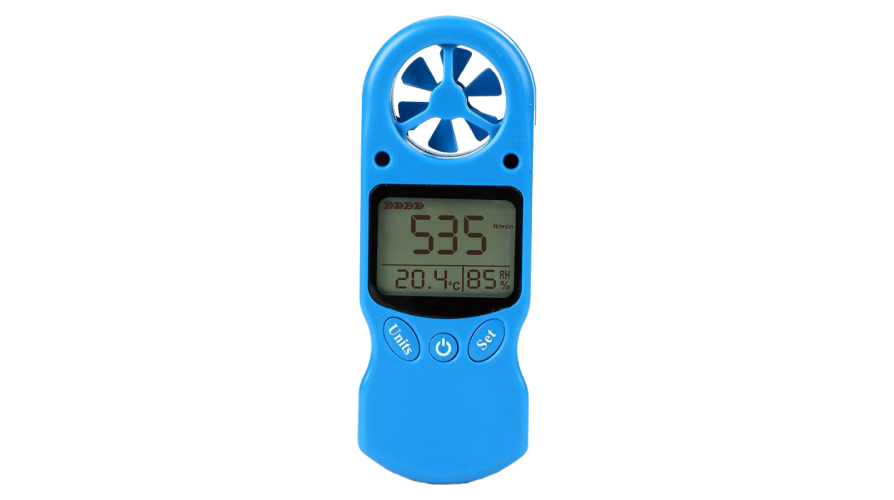Comparing Digital and Mechanical Anemometers: Which is Right for You?
Comparing Digital and Mechanical Anemometers: Which is Right for You?
Blog Article
Anemometers Unveiled: Comprehending Their Value in Ecological Tracking and Precaution
The function of anemometers in ecological monitoring and safety and security actions is typically undervalued, yet their relevance is undeniable. These tools have a long background rooted in clinical query and technical developments, evolving to come to be vital tools in various fields. From meteorology to aviation safety and security, anemometers play a critical duty in giving precise data that educates decision-making processes and boosts total safety. Recognizing the details of anemometers unveils a world of vital understandings that are essential to our understanding of the atmosphere and the procedures we take to make sure security.
Background of Anemometers
The evolution of anemometers can be traced back to the ancient people where primary wind measuring devices were very first used. One of the earliest known anemometers was the hemispherical cup anemometer developed by Leon Battista Alberti in the 15th century.
In the 18th century, the renowned researcher John Thomas Romney Robinson presented the Robinson anemometer, which included 4 hemispherical mugs installed on horizontal arms that extended from a main axis. This design became a criterion in meteorological dimensions due to its accuracy and integrity. Over the years, developments in innovation led to the advancement of more modern-day anemometers, including ultrasonic anemometers and laser Doppler anemometers, supplying raised accuracy and efficiency in determining wind speed and direction. The history of anemometers showcases a remarkable journey of development and progress in the area of meteorology.
Kinds Of Anemometers
Throughout the area of weather forecasting, numerous kinds of anemometers have actually been created to accurately gauge wind speed and instructions. One of the most usual type is the cup anemometer, which contains three or four mugs mounted on straight arms that revolve with the wind. As the mugs spin, the speed at which they revolve is directly proportional to the wind rate. An additional widely utilized kind is the vane anemometer, which features a tail or fin that straightens itself with the wind direction. This alignment enables the tool to establish the wind direction. Sonic anemometers make use of ultrasonic signals to measure wind rate and instructions properly. They are generally utilized in study applications due to their high accuracy. Hot-wire anemometers operate based upon the principle that the cooling result of wind on a warmed wire is symmetrical to the wind rate. These anemometers are suitable for determining reduced wind rates with high accuracy. Each sort of anemometer has its strengths and is chosen based upon the specific needs of the monitoring job available.
Applications in Weather Forecasting
Having actually gone over the various types of anemometers used in weather forecasting for measuring wind rate and direction, it is vital to explore their useful applications in the area. Anemometers play an important function in meteorology by providing exact and real-time data on wind conditions (anemometer). Meteorologists use anemometers to check wind speed and instructions to forecast climate patterns, problem warnings for extreme climate occasions like twisters, storms, and storms, and evaluate weather for aviation safety and security
In meteorology, anemometers assist in understanding local and local wind patterns, which are vital for forecasting weather modifications and establishing weather fads. These gadgets are additionally made use of in research to research microclimates, metropolitan warmth islands, and air contamination dispersion. In addition, anemometers are utilized in agriculture to optimize plant monitoring practices, such as irrigation and chemical application, based on wind conditions.
Significance in Aviation Safety
An integral facet of making certain aviation security hinges on the meticulous monitoring of wind problems making use of anemometers. Anemometers play an essential duty in aeronautics by offering real-time information on wind speed and direction, helping pilots in making informed choices throughout look at this website landing, trip, and liftoff. Solid and unforeseeable winds can significantly affect aircraft operations, making it vital for aviation authorities to rely upon exact wind dimensions to guarantee the safety and security of travelers and staff.

In the vibrant setting of air travel, where also minor modifications in wind rate and instructions can have extensive effects, anemometers stand as vital tools for advertising secure and secure air travel.
Role in Environmental Research Study
Anemometers play a crucial function in environmental research by providing vital data on wind rate and direction. By properly gauging wind qualities, anemometers assist scientists examine the movement of contaminants in the air, evaluate the impact of industrial exhausts, and predict the spread of contaminants in the setting.


Conclusion
In final thought, anemometers have actually played a critical duty in environmental tracking and security steps. Recognizing the importance of anemometers is essential for accurately determining wind speed and direction, which is crucial for predicting climate patterns, guaranteeing secure aviation operations, and carrying out environmental researches.
One of the earliest well-known anemometers was the hemispherical cup anemometer invented by Leon Battista Alberti in the 15th century. from this source Over the years, improvements in modern technology led to the advancement of more modern-day anemometers, including ultrasonic anemometers and laser Doppler anemometers, offering boosted accuracy and effectiveness in determining wind rate and direction. Hot-wire anemometers run based on the concept that the cooling effect of wind on a heated wire is symmetrical to the wind their website rate. Meteorologists use anemometers to check wind speed and instructions to anticipate weather patterns, problem cautions for serious weather condition occasions like hurricanes, hurricanes, and tornados, and evaluate atmospheric problems for aeronautics safety and security.
Recognizing the value of anemometers is essential for properly gauging wind rate and direction, which is vital for forecasting climate patterns, making sure secure aviation operations, and performing environmental researches. (anemometer)
Report this page